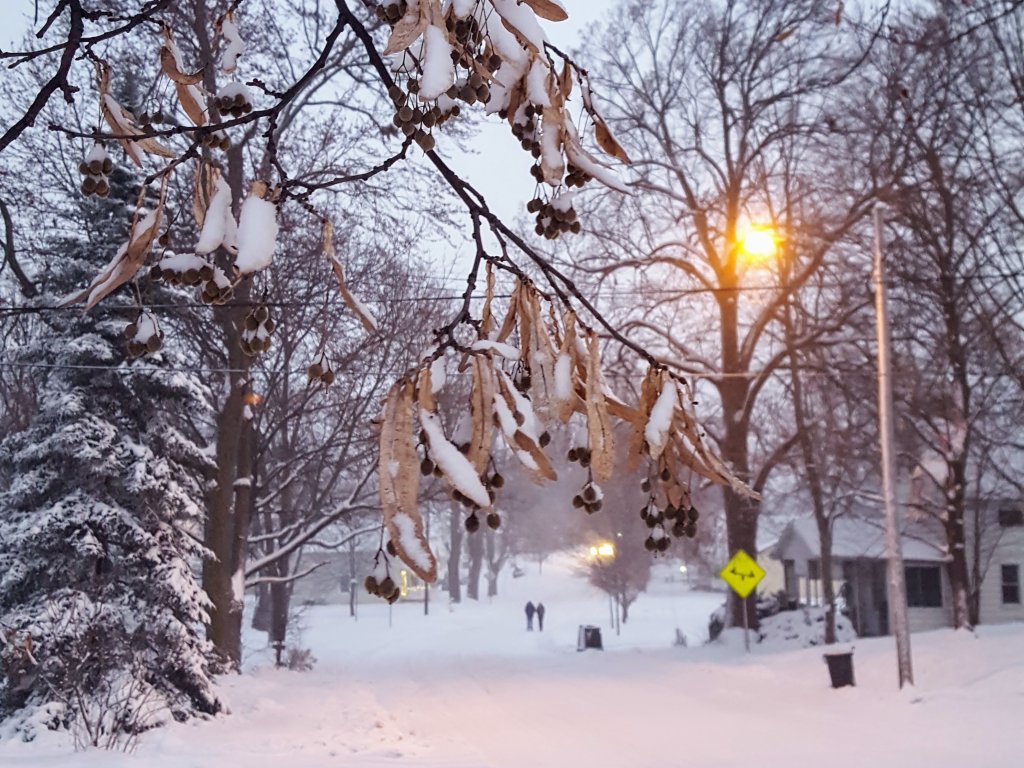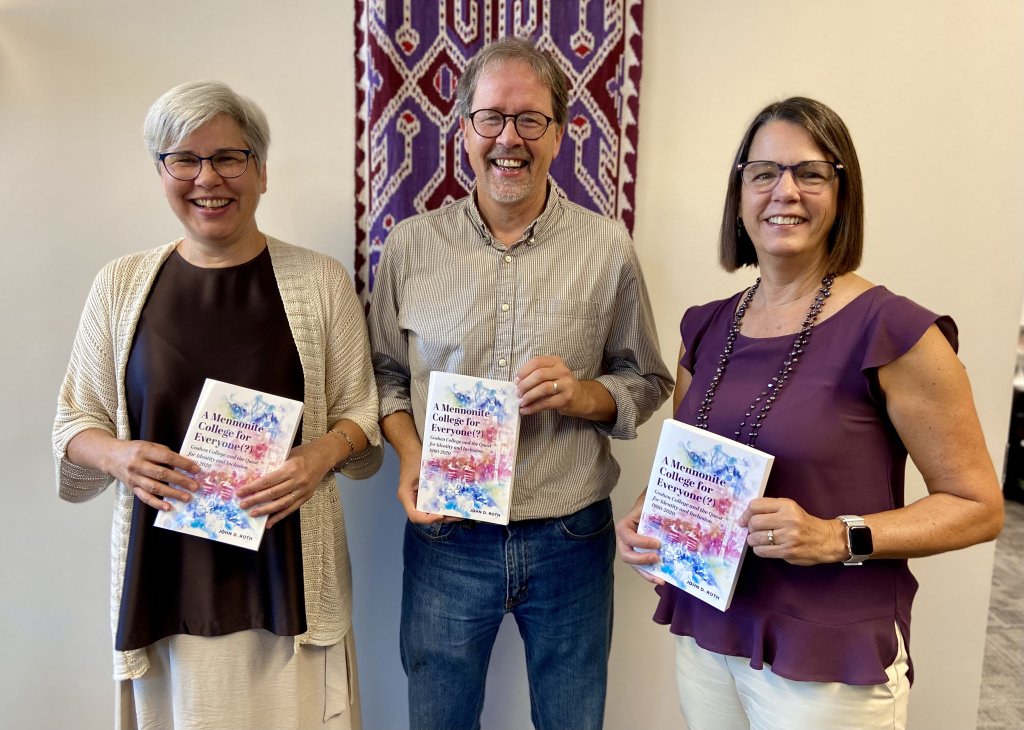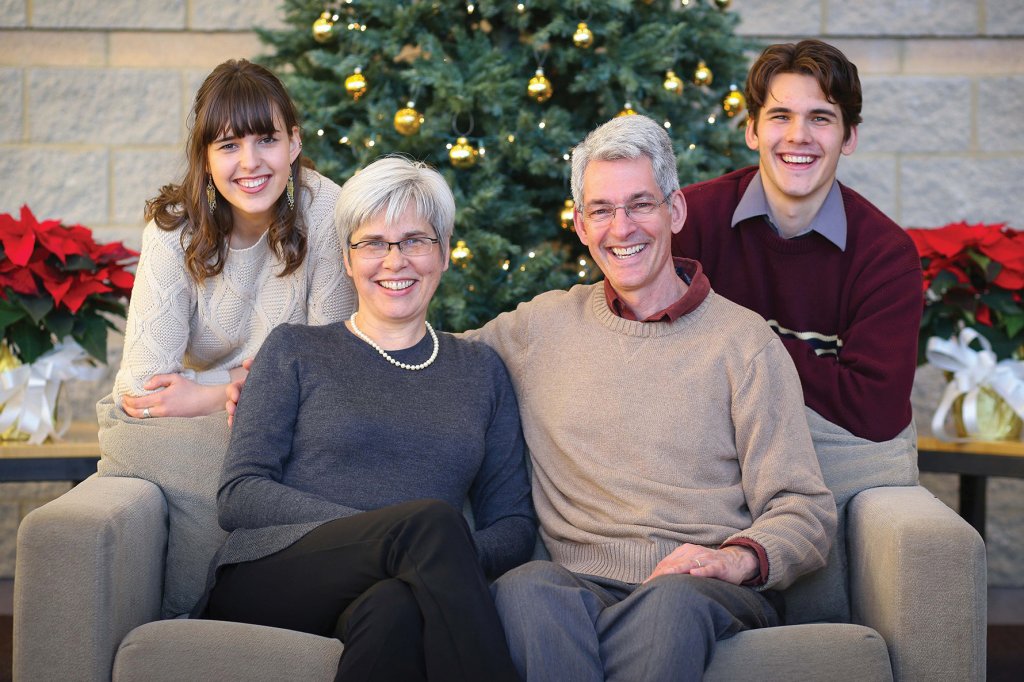

Stretching for solidarity in global Anabaptist education
In a time when the role of education is being contested, and church bodies are experiencing divisions, something new is coming together.

Goshen College President Rebecca Stoltzfus offers regular and intimate reflections on campus, interesting people she’s met, conversations she’s part of and higher education today.
Email her: president@goshen.edu



In a time when the role of education is being contested, and church bodies are experiencing divisions, something new is coming together.


When Kevin and I set out on a learning tour about Anabaptists in Switzerland and Germany, we were prepared to hear stories of persecution and cruel executions. What has surprised me are the stories of ecumenical reconciliation and active love that continue to spring forth from the Anabaptist movement 500 years later.


Last weekend, I had the privilege of making my final speech to our 2025 graduating class of seniors at our baccalaureate service, for which they chose the theme of joy. Here are a few of the thoughts I shared with them, as well as the gift I gave them.


This year I am newly awake to the reality that Jesus was born in Palestine under the occupation of an empire. And yet, throughout the Gospel stories of the Nativity, in the face of empire, people seek the light. They sing, they dance, they seek out friends and visit each other, they boldly proclaim their faith, they worship and they have babies. The world is also delightful. Somehow, we have to hold all of this together.


The violence unfolding in Israel/Palestine is horrifying and heartbreaking. As a follower of Jesus, I stand for peace and am opposed to killing. And as Dr. Martin Luther King said, “There can be no justice without peace and there can be no peace without justice.” The tensions between peace and justice makes this conflict so heavy and morally disturbing.


It is no secret and no surprise: Goshen College has been in many ways subverted – turned from below – by our inquiring and passionate students and faculty and the transformational changes they have brought about. John D. Roth, professor emeritus of history and a leading Anabaptist-Mennonite scholar, illuminates and honors that history in: "A Mennonite College for Everyone(?): Goshen College and the quest for identity and inclusion, 1960-2020."


Christmas, for us northern-dwellers, is the co-incidence of an astronomical event and the incarnation of God as a baby. Two truths, of very different sorts. When darkness is at its longest, the world turns, but almost imperceptibly. In a world captivated by the powers of domination, God enters, but as a human baby.


We all come from a family, of one sort or another. And we all go through periods when our family loses us — either literally or otherwise. They don’t understand who we are, or are surprised to discover what we truly love, confused by who we were meant to be. And that is what we see in the story of the 12-year-old Jesus lingering in Jerusalem and hanging out at the temple.


“How can you be inclusive if you are Christ-centered?” This is one of the questions still ringing in my ears from a recent regional gathering. Is it possible that in this time of acute and painful need for us to get along better, our most radical vocation is to go deeper — rather than thinner — on our Anabaptist-Mennonite identity, because to be Christ-centered is true fuel and seed for such a new creation?


I am in need of a Sabbath Christmas. Maybe you are too. Here is my wish for all of us in this December of 2020.
